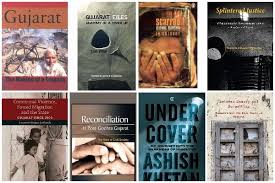Indian cinema has enjoyed worldwide fame for its richly colorful musicals and sentimental love stories. But underneath all that gloss, there exists a genre that is riveting and peeks under the cover of the underbelly of society the grim Indian thriller. Niche slicesThese films, often described as Indian noir, stand in sharp contrast to typical Bollywood and tell stories marked by moral uncertainty, social critique, and psychological intricacy.
This article explores the anatomy of grim Indian thrillers, dissecting their core themes, recurring tropes, and the underlying truths they reveal about contemporary India.
The Evolution of Indian Noir
Early Influences and Foundations
Indian noir traces its roots to the 1940s and 1950s, drawing inspiration from American film noir and adapting its elements to the Indian context. Pioneering filmmakers like Guru Dutt and Raj Khosla infused their narratives with shadowy aesthetics and complex characters, laying the groundwork for the genre’s evolution. (Scribd)
Resurgence in Contemporary Cinema
The 1990s witnessed a resurgence of Indian noir, with directors like Ram Gopal Varma leading the charge. Films such as “Satya” and “Company” delved into the underbelly of urban crime, presenting gritty narratives that resonated with audiences.
Core Themes in Grim Indian Thrillers
1. Moral Ambiguity and Ethical Dilemmas
Central to Indian noir is the exploration of moral ambiguity. Protagonists often grapple with ethical dilemmas, blurring the lines between right and wrong. This complexity adds depth to characters and challenges viewers to question their own moral compass.(crimereads.com)
2. Societal Critique and Realism
Grim Indian thrillers frequently serve as a mirror to society, highlighting issues such as corruption, caste discrimination, and systemic injustice. Films like “Santosh” delve into these themes, offering a stark portrayal of societal challenges. (theguardian.com)
3. Psychological Exploration
Delving into the human psyche, these thrillers often portray characters with complex psychological profiles. “Moodu Pani,” for instance, presents a protagonist whose actions are driven by deep-seated psychological trauma. (Wikipedia)
Recurring Tropes in Indian Noir
1. The Anti-Hero Protagonist
Departing from traditional heroic archetypes, Indian noir often features anti-heroes flawed individuals navigating a corrupt world. Their journeys are marked by internal conflicts and morally ambiguous decisions.
2. Femme Fatales and Complex Female Characters
While early noir often relegated women to secondary roles, contemporary Indian thrillers showcase complex female characters. Films like “Santosh” highlight women navigating patriarchal structures, asserting agency in challenging environments. (Financial Times)
3. Urban Landscapes as Characters
The setting in Indian noir is more than a backdrop; cities like Mumbai and Delhi become characters themselves, embodying chaos, anonymity, and moral decay. These urban landscapes amplify the narratives’ tension and realism.
Unveiling the Truths: Societal Reflections
Caste and Class Disparities
Grim Indian thrillers often confront the harsh realities of caste and class disparities. Through their narratives, they shed light on systemic inequalities and the struggles of marginalized communities.(OpenEdition Journals)
Institutional Corruption
A recurring theme is the pervasive corruption within institutions. These films critique the failures of law enforcement, politics, and bureaucracy, exposing the challenges faced by those seeking justice.
Gender Dynamics
Addressing gender dynamics, Indian noir explores the complexities of masculinity and femininity. Characters navigate societal expectations, with narratives often highlighting the resilience and agency of women in oppressive environments.
Dark Indian thrillers, imbued with noir sensibility, make for a fascinating viewpoint on that complex country in this day and age. These are not easy films to watch – and through their fellow-feeling with moral uncertainty, social denunciation and psychic prolixity, they refuse to allow you off that hook. As the genre keeps reinventing, it still remains a crucial and provocative aspect of Indian cinema.
Frequently Asked Questions (FAQ)
Q1: What defines a grim Indian thriller?
A grim Indian thriller is characterized by its dark themes, moral ambiguity, and realistic portrayal of societal issues. These films often delve into crime, corruption, and psychological complexities.
Q2: How does Indian noir differ from traditional Bollywood films?
Unlike traditional Bollywood films that often focus on romance and musical elements, Indian noir emphasizes gritty narratives, complex characters, and societal critique, often eschewing song-and-dance sequences.
Q3: Are there notable examples of Indian noir films?
Yes, notable examples include “Satya,” “Company,” “Santosh,” and “Moodu Pani,” each offering unique perspectives on crime and societal issues.(Wikipedia)
Q4: What themes are commonly explored in grim Indian thrillers?
Common themes include moral ambiguity, institutional corruption, caste and class disparities, and psychological trauma.
Q5: How has the portrayal of female characters evolved in Indian noir?
Contemporary Indian noir has seen a shift towards complex female characters who assert agency and navigate patriarchal structures, moving beyond traditional stereotypes.